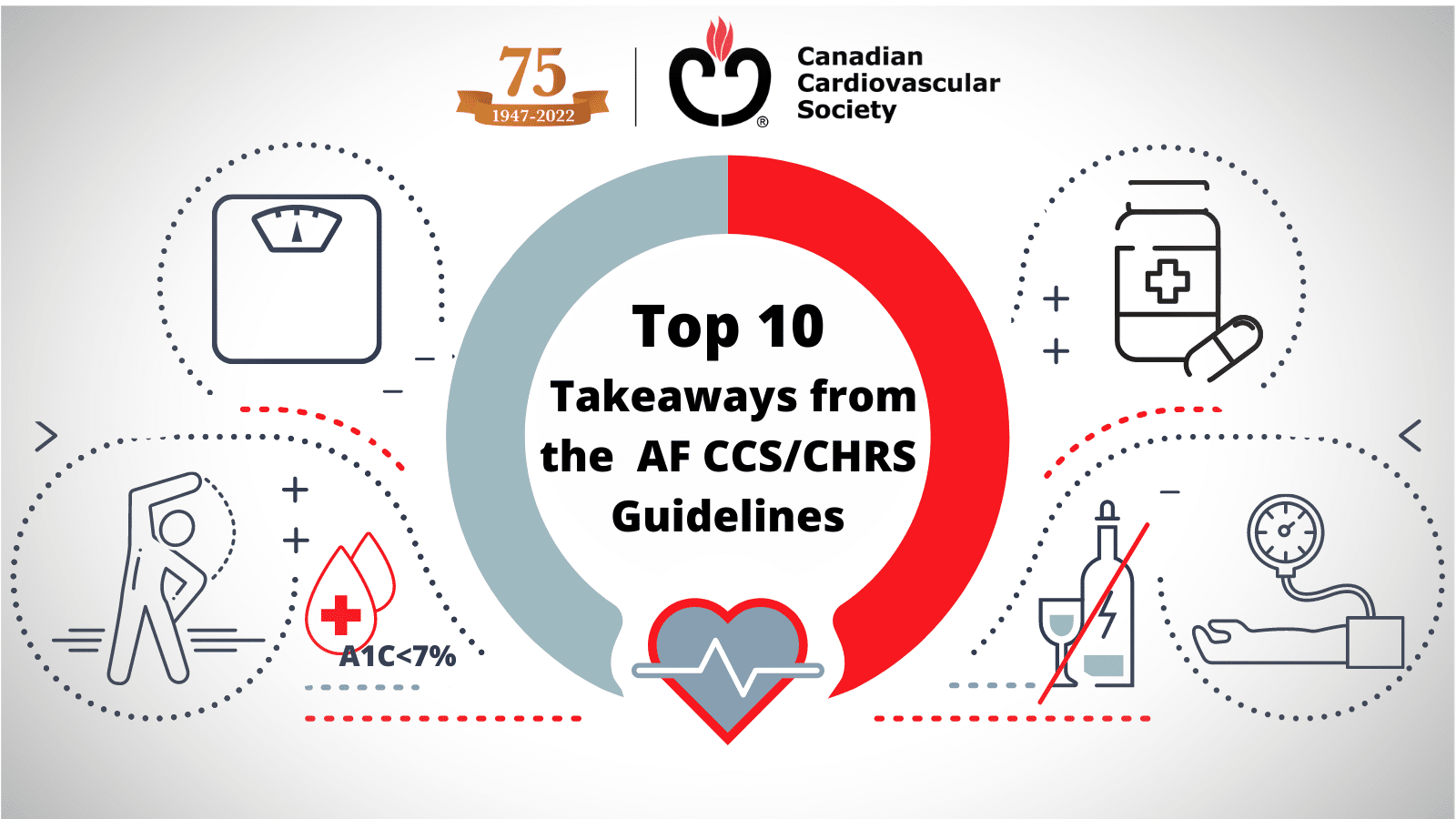Announcement
Top 10 Takeaways
April 9, 2022

Top 10 Takeaways from the 2020 Canadian Cardiovascular Society/Canadian Heart Rhythm Society Comprehensive Guidelines for the Management of Atrial Fibrillation, as referenced in the article “Treat growing epidemic of atrial fibrillation by targeting risk factors, leading cardiologists urge”.
April 12, 2024
Lipid screening is a key component of risk assessment for primary prevention of atherosclerotic...
ASCVD Cholesterol Dyslipidemia GuidelinesFebruary 29, 2024
Under the co-chair leadership of Drs. Kevin R. Bainey and Guillaume Marquis-Gravel, the Canadian...
Antiplatelet Therapy ASCVD GuidelinesAugust 8, 2023
In this clinical practice update (CPU) we aim to provide responses to fundamental questions that...
Guidelines Heart failure Phenotypes